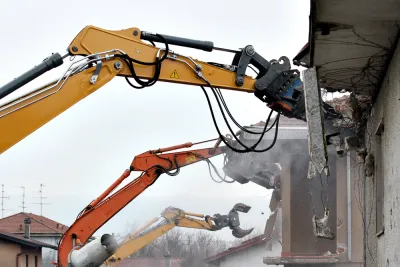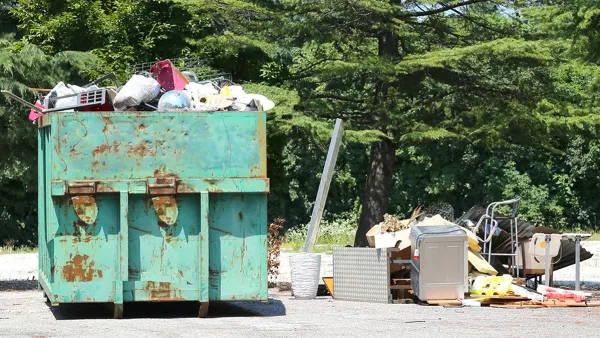Jason Hackworth argues that demolition has come to be seen as a good, in and of itself, in rust belt cities like Detroit; giving rise to policies that are wrong-headed and dangerous.

In recent years, the demolition of vacant homes and buildings has gone from being seen as a controversial act to being seen as inherently good. In a piece for American Politics and Policy Blog of the London School of Economics, Jason Hackworth argues that this is a dangerous assumption.
Hackworth opens his piece at a celebration of the demolishing of the 10,000th home in Detroit and uses this as a symbol of what he sees as exactly the wrong kind of thinking. Arguing that cities have become so enthusiastic about blight removal, that they've lost sight of the more important part of rebuilding cities and neighborhoods, the building itself.
"Detroit is not the only city to have embraced demolition-only urban policy. Cities across the region are using a variety of federal and state funds to demolish as much “blight” as they can," Hackworth claims. Through his research measuring the trajectory of neighborhoods with "extreme housing loss" Hackworth has found that, "The neighborhoods where demolitions have been most active are more economically and socially isolated than they were in 1970."
Hackworth condemns our celebration of demolition as "a collapse of policy imagination." Cautioning us against simplistic, quick fix thinking. Whether or not you find the research compelling, it's important to reexamine ideas billed as silver bullets for rebuilding communities and a reminder of the complexity inherent in rebuilding communities.
FULL STORY: Demolition-only urban policy leads to economic and social isolation.

National Parks Layoffs Will Cause Communities to Lose Billions
Thousands of essential park workers were laid off this week, just before the busy spring break season.

Retro-silient?: America’s First “Eco-burb,” The Woodlands Turns 50
A master-planned community north of Houston offers lessons on green infrastructure and resilient design, but falls short of its founder’s lofty affordability and walkability goals.

Delivering for America Plan Will Downgrade Mail Service in at Least 49.5 Percent of Zip Codes
Republican and Democrat lawmakers criticize the plan for its disproportionate negative impact on rural communities.

Test News Post 1
This is a summary

Test News Headline 46
Test for the image on the front page.

Balancing Bombs and Butterflies: How the National Guard Protects a Rare Species
The National Guard at Fort Indiantown Gap uses GIS technology and land management strategies to balance military training with conservation efforts, ensuring the survival of the rare eastern regal fritillary butterfly.
Urban Design for Planners 1: Software Tools
This six-course series explores essential urban design concepts using open source software and equips planners with the tools they need to participate fully in the urban design process.
Planning for Universal Design
Learn the tools for implementing Universal Design in planning regulations.
EMC Planning Group, Inc.
Planetizen
Planetizen
Mpact (formerly Rail~Volution)
Great Falls Development Authority, Inc.
HUDs Office of Policy Development and Research
NYU Wagner Graduate School of Public Service





























